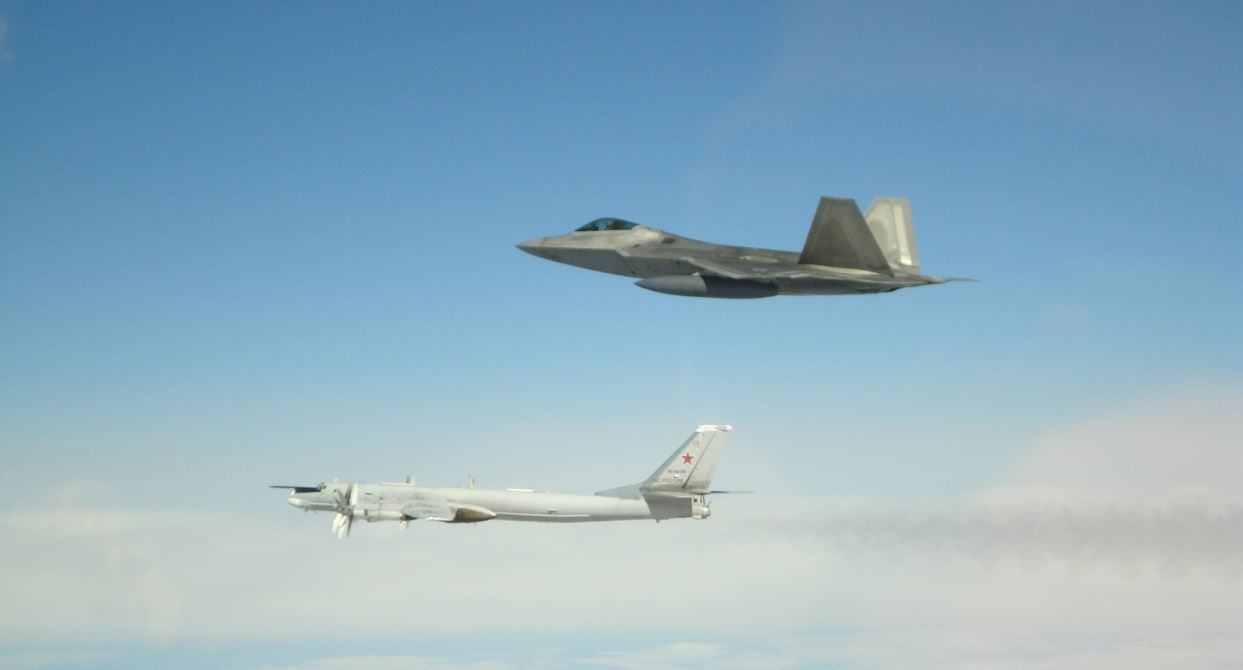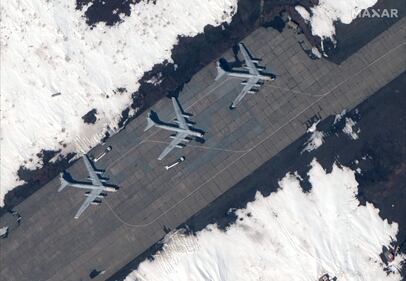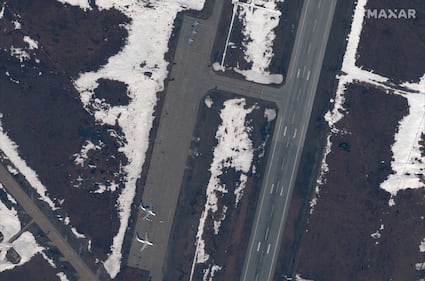For the second day in a row, U.S. aircraft intercepted Russian bombers and fighters off the western coast of Alaska, North American Aerospace Defense Command announced Wednesday.
Two pairs of F-22 Raptors intercepted Russian Tu-95 bombers and Su-35 fighter jets entering the Alaskan Air Defense Identification Zone, or ADIZ, on Tuesday, but remained in international airspace.
The F-22s were aided by E-3 Sentry airborne early warning and control aircraft, which provided surveillance.
NORAD has intercepted an average of six to seven Russian sorties annually entering its ADIZ since the Kremlin resumed its long-range aviation patrols in 2007, U.S. officials said. Tuesday’s incident came a day after a similar intercept on Monday.
These were the “fourth and fifth intercepts this year,” according to NORAD officials, possibly hinting at an increased operational tempo on the part of Russian forces.
RELATED

During the Tuesday intercept, Russian bombers first entered the ADIZ and were intercepted by two F-22s. The Russian pilots then exited the ADIZ and later returned, accompanied by two Su-35 fighter jets.
NORAD then sent two more F-22s and an E-3 to relieve the initial intercept aircraft. A KC-135 refueling aircraft supported both intercept teams, officials said.
Maxar Technologies, a Colorado-based space technology firm, collected imagery of Russian military aircraft, including the Tu-95 bombers that likely flew off the coast of Alaska on Monday and Tuesday.
Maxar gathered imagery of Anadyr Airfield, also known as Ugolny Airport, on May 17. The airfield is located in northeastern Russia. The photos, provided to Military Times, show three Tu-95 bombers along with three Su-35 fighter aircraft, one A-50 airborne early warning and control aircraft and two Il-76/78 transport and refueling aircraft at the base.
“Of note, on today’s [May 22] satellite imagery of the airfield, no Tu-95 bombers were seen,” Maxar senior director Stephen Wood said in an email.
Image 0 of 3
During the encounter Tuesday, Russian aircraft remained in international airspace and at no time entered U.S. or Canadian sovereign airspace, officials said.
The Alaskan ADIZ extends approximately 200 miles west off Alaska’s coast. An ADIZ requires aircraft to identify themselves to civil and military air traffic controllers due to national security concerns.
Air Force Gen. Terrence O’Shaughnessy, who leads NORAD and U.S. Northern Command, has warned in the past year that the “homeland is no longer a sanctuary," due to the increasing missile and air force capabilities of peer adversaries.
Kyle Rempfer was an editor and reporter who has covered combat operations, criminal cases, foreign military assistance and training accidents. Before entering journalism, Kyle served in U.S. Air Force Special Tactics and deployed in 2014 to Paktika Province, Afghanistan, and Baghdad, Iraq.








